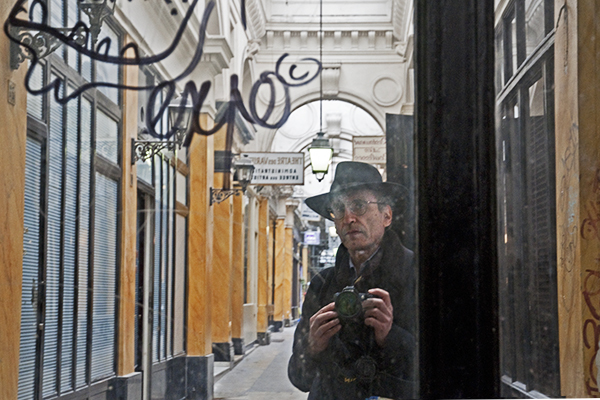Malcolm Easton
Member Spotlight - December 2018
- Where did you grow up, and where do you live now? I grew up on the east coast, where my education included degrees in physics and math as well as art classes. As soon as I could manage, I escaped to the warmer climate of California. I now live in Berkeley, with my wife Sue—also a photographer— and our chihuahua Maya.
- Why did you join TPS, and how long have you been involved?
I first learned of TPS from a competition announcement. When I looked at the website I was immediately impressed by the amazing roster of members and by the many activities that the organization supports. I joined in 2010 and have been a member ever since.
- Why did you become a photographer, and where do you find inspiration or motivation for your work?
My interest in photography dates back to my preteen years. I had a strong interest in natural beauty and wanted to capture it. I shot landscapes, rock formations and waterfalls, at first in black-and-white and later in color. A major change came years later when I decided to try digital photography. At that time I also felt a need to expand my knowledge. I began taking classes that stimulated me to consider other approaches to photographic art.
The resolution of my first digital camera was too low to provide satisfactory images unless I was close to my subjects. So I had to change my ideas about what I wanted to capture. As I roamed through the streets and parks near my home, I began to discover new visual interests. I developed an appreciation for small things that are ordinarily overlooked. Of course I now photograph with higher resolution but my focus remains on subjects of modest size.
My ongoing inspirations come from daily life. The way a beam of sunlight enters a kitchen window and lights up a jar. The stains on a sidewalk. The arrangement of rough stones in a wall. In my studio work, I try to capture some of the feelings evoked by these sights. I'm also inspired by historical and contemporary sources, including classic Dutch and Flemish still lifes, Joseph Cornell's assemblages, and recent still life work by numerous artists.
- How would you describe your photography and/or working process?
My approach to photographic art is experimental. I may start with an idea for an image, but through trial-and-error I usually end up with something a bit different. As a studio artist, I first create my scene. The items in my arrangements come from estate sales and thrift stores. These domestic objects carry signs of long use—stains, corrosion, wear. Though I don't know anything about the original owners, something about each object that I choose connects with my own history. For example, a wooden top resembles one that I played with at age ten. A gardening tool reminds me of my less-than-green thumb. One by one, I arrange items against a black felt background, adding something, removing something, until I'm ready to start shooting. When finished, a single composition may evoke overlaid memories of childhood and adulthood, of kitchen and garden and workshop.
Shooting in my standalone studio, I use only natural light, partly soft and partly focused. At certain times of day, a direct beam of sunlight enters through a window or skylight. With a handheld mirror, I direct light onto my subjects, and then I trigger the shutter by voice control. My exposures take typically 1-3 seconds, during which time I can move the mirror to "paint" the beam of light over the subjects. The resulting image is sometimes surprising. My best result is often one that I didn't anticipate. - Please tell us about your most recent photographic work.
For several years I've been creating still life arrangements on a tabletop. My latest work developed from the idea of letting the objects slip off the table. To accomplish this, I set up my subjects on a stepped platform covered in black. Some items hang freely in space—over the edge— while others rest partly or entirely on one of the horizontal surfaces. Sometimes I set an object moving during the exposure, either spinning or swinging like a pendulum. In the case of a pendulum, my light beam sweeps over the assemblage several times during the exposure and so creates multiple images.
My aim here, as in my earlier work, is to transform my arrangement of objects—bringing new life to everyday things that might otherwise be forgotten.